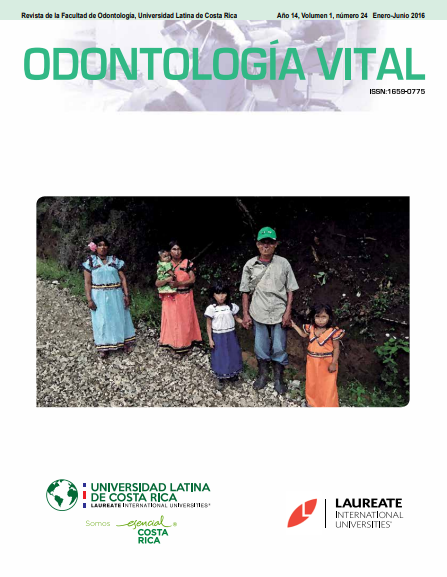Dental usage of Costa Rican propolis
Based on research: “Determining the level of in vitro antimicrobial effectiveness of propolis high in phenolic compounds from Costa Rica on the species streptococcus mutans and streptococcus sanguinis in the Universidad Latina de Costa Rica in january and august 2012.”
DOI:
https://doi.org/10.59334/ROV.v1i24.259Keywords:
Propolis, bee glue, tooth decay, periodontal disease, streptococcus mutans, streptococcus sanguinis, natural medicineAbstract
The aim of the research was to determine the In Vitro level of antimicrobial effectiveness of Costa Rican propolis
high in phenolic compounds on the species Streptococcus Mutans and Streptococcus Sanguinis.
It was measured the bacteriostatic and / or bactericidal action of propolis in 50%, 70% and 80% concentration,
comparing their effect against chlorhexidine 0.12%.
The analysis showed that propolis proved a bactericidal effect on the species Streptococcus Sanguinis regardless
of their concentration; on the other hand on the propolis concentrations of 50% and 70% on the bacterium
Streptococcus mutans resulted in bacteriostatic action.
It is concluded that the three extracts of propolis generated an antimicrobial effect on the species S. mutans and
S. Sanguinis. Antibacterial effects from extracts of propolis were similar to chlorhexidine 0.12%, this justifies
that can be used as a tool for prevention and / or adjunctive treatment of periodontal disease and reduction of
tooth decay risk.
Downloads
Downloads
Published
How to Cite
Issue
Section
License
Copyright (c) 2016 Odontología Vital

This work is licensed under a Creative Commons Attribution 4.0 International License.
Authors who publish with Odontología Vital agree to the following terms:
- Authors retain the copyright and grant Universidad Latina de Costa Rica the right of first publication, with the work simultaneously licensed under a Creative Commons Attribution 4.0 International license (CC BY 4.0) that allows others to share the work with an acknowledgement of the work's authorship and initial publication in this journal.
- Authors are able to enter into separate, additional contractual arrangements for the non-exclusive distribution of the Odontología Vital's published version of the work (e.g., post it to an institutional repository or publish it in a book), with an acknowledgement of its initial publication.
- Authors are permitted and encouraged to post their work online (e.g., in institutional repositories or on their website) prior to and during the submission process, as it can lead to productive exchanges, as well as earlier and greater citation of published work.
Métricas alternativas











